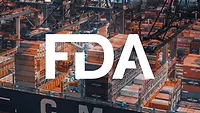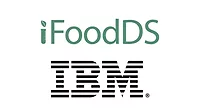GAO, HHS Urge FDA to Develop Implementation Plan for Food Traceability Final Rule

The U.S. Government Accountability Office (GAO) and the U.S. Department of Health and Human Services (HHS) are urging the U.S. Food and Drug Administration (FDA) to develop and document an implementation plan for Section 204 of the Food Safety Modernization Act (FSMA 204), also known as the Food Traceability Final Rule.
In November 2022, FDA issued the Food Traceability Final Rule. Industry has until January 20, 2026 to comply with the recordkeeping requirements of the rule. GAO conducted a report on the Food Traceability Final Rule to describe FDA's and selected stakeholders' views on the rule's recordkeeping requirements, and to examine FDA's implementation of the rule and identify challenges that FDA and stakeholders may face in achieving compliance.
To determine which foods should be included on the Food Traceability List (FTL) and therefore be subject to the final rule, FDA used an approach that incorporates statutorily mandated criteria, such as the history and severity of prior outbreaks involving each item. Several stakeholders GAO interviewed said FDA's methodology for identifying foods for the list was appropriate, while others disagreed, stating that FDA's approach resulted in an overly inclusive list. In response to similar comments on the draft rule, FDA provided its rationale for considering foods at the commodity level, explaining that foods in these categories had similar risk characteristics and associated hazards.
At present, FDA has taken some steps to help industry and nonfederal regulators prepare for compliance with and enforcement of the Food Traceability Final Rule. In late 2022, FDA began an iterative planning process for implementing the rule, which the agency has not yet finalized or documented, according to FDA officials.
Components of an implementation plan could help address compliance challenges that stakeholders identified. For example, the plan could include additional information on nonfederal regulators' roles in the inspection process and FDA's enforcement strategy and needed resources. It also could identify additional guidance, training, and tools for stakeholders.
By finalizing and documenting an implementation plan, FDA will have better assurance it is well positioned to make progress toward its regulatory goals and address the various challenges that stakeholders identified to achieving compliance by the deadline, reports GAO.
Looking for quick answers on food safety topics?
Try Ask FSM, our new smart AI search tool.
Ask FSM →









